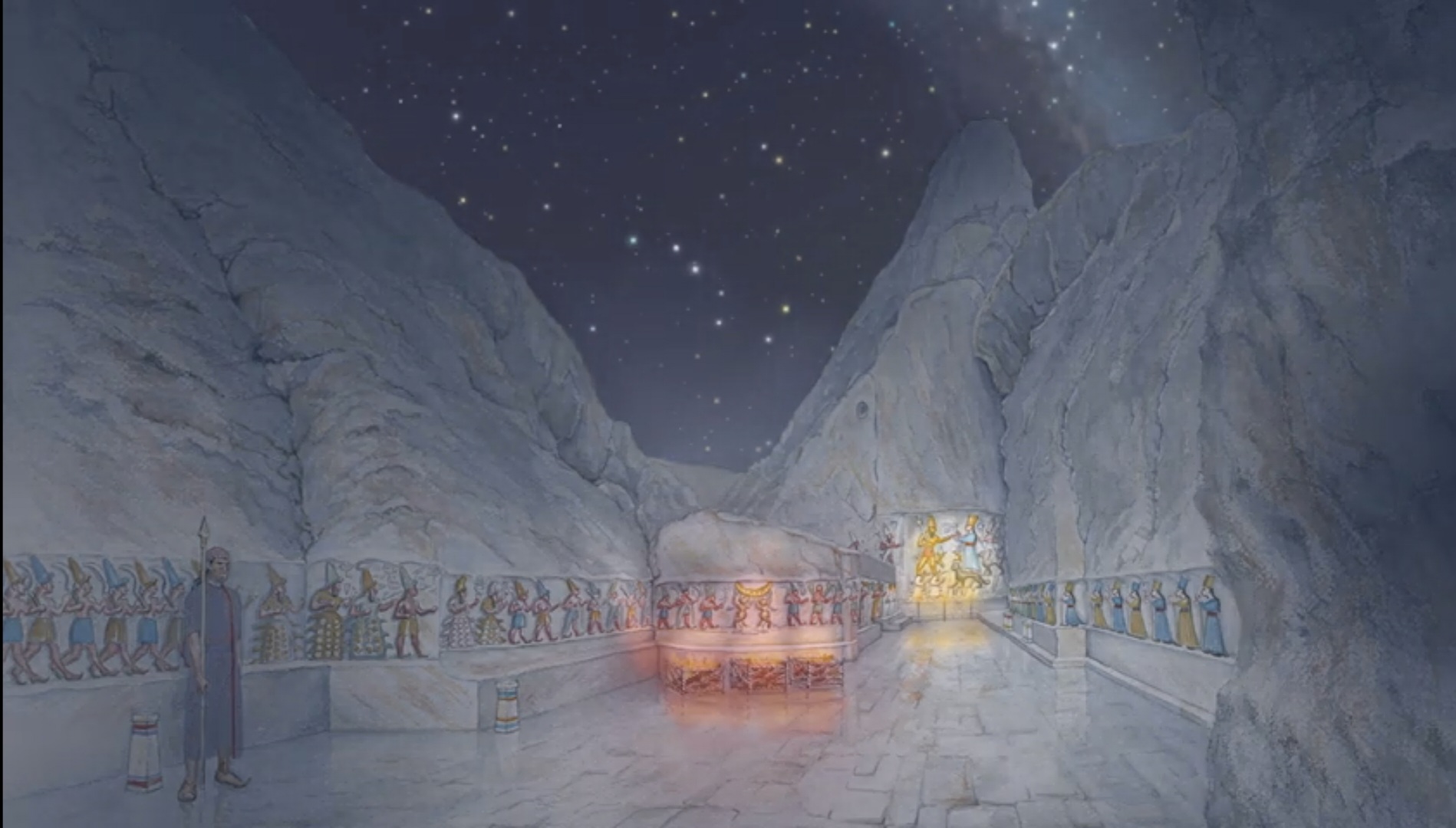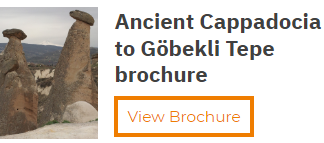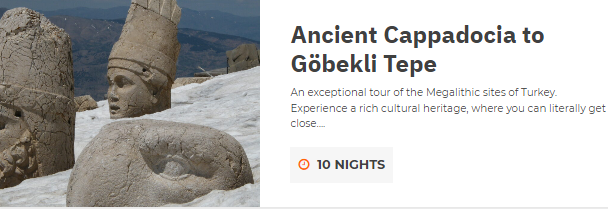The Winter Solstice was believed by our distant ancestors to be that point at which the Sun appeared to stand still and life rekindles after the extremes of winter. While our connections with the stars and planets have always been with us running through cultures like a thread, civilisations come and go but are they ever actually “lost”?
An entire civilisation is intrinsically a hard thing to lose but Turkey keeps turning them up! The most spectacular of them has to be the discovery in 1834 by French Archaeologist Charles Texier of Hattuşa, the capital of an unknown Empire: the Hittites.
It is certainly an unlikely location to locate one’s capital city. It is away from rivers and trade routes and is isolated in the mountain fastness of Central Anatolia where the seasons are harsh and the winter is long. The discovery burst onto the international scene for a number of reasons. The primary reason was that historians knew that there was a gap in the history of the near East but nobody knew what precisely was missing.
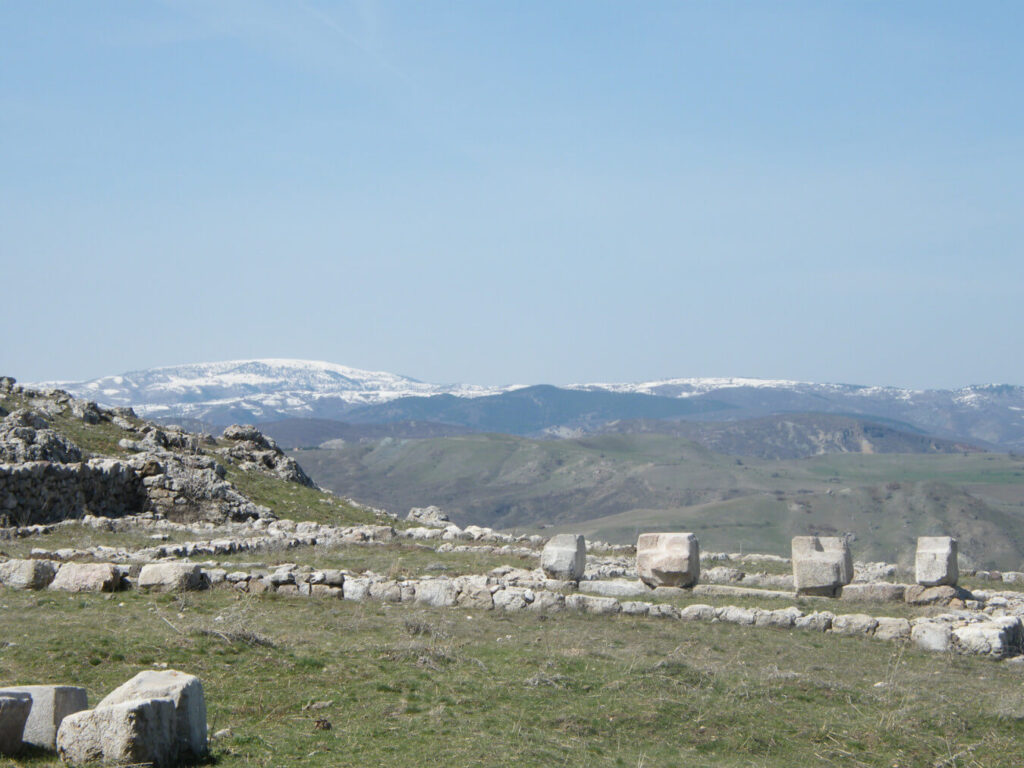
The only references to Hittites had been in the Bible and Bible Archaeology was a major driving force behind the development of early archaeology. However, these were just a few references and suggested small Hittite Kingdoms that we now know emerged after the Bronze Age collapse between 1200 and 1150 BC. This was much bigger than what could be inferred from Biblical references.
What Texier found was huge! It didn’t just fill a gap; it completed a comprehensive picture and gave the Bronze Age world of the eastern Mediterranean and Near East a balance it had always lacked and it completely upended some cherished beliefs. The added bonus was the not inconsiderable Royal Library filled with clay tablets of religious texts, laws, legal rulings, literature, history, diplomatic correspondence and most amazing of all, the first recorded comprehensive peace treaty signed between Egypt’s Ramses the Great and Hattusili, the Hittite King, and uniquely, it is the only treaty from antiquity for which we have both sides. This treaty of Peace and Friendship between the Hittites and Egyptians contains clauses that are entirely familiar to us today which is why a copy of it stands in the UN Headquarters in New York.
The archive was in a number of languages including the Lingua Franca of the day, Akkadian which was understood. What was unknown, although written in Cuneiform which had been deciphered, was Hittite. It wasn’t until 1915 that a Czech linguist, Bedrich Hrozny fully deciphered the Hittite language. Excavations of the capital city of Hattuşa have continued, with a few interruptions for war and pestilence, since that first discovery with knowledge growing each year. However, what had stumped scholars was the nature and precise purpose of the nearby sacred Rock Sanctuary of Yazilikaya although the preponderance of texts relating to astrology and astronomy in the archives might have been a clue.
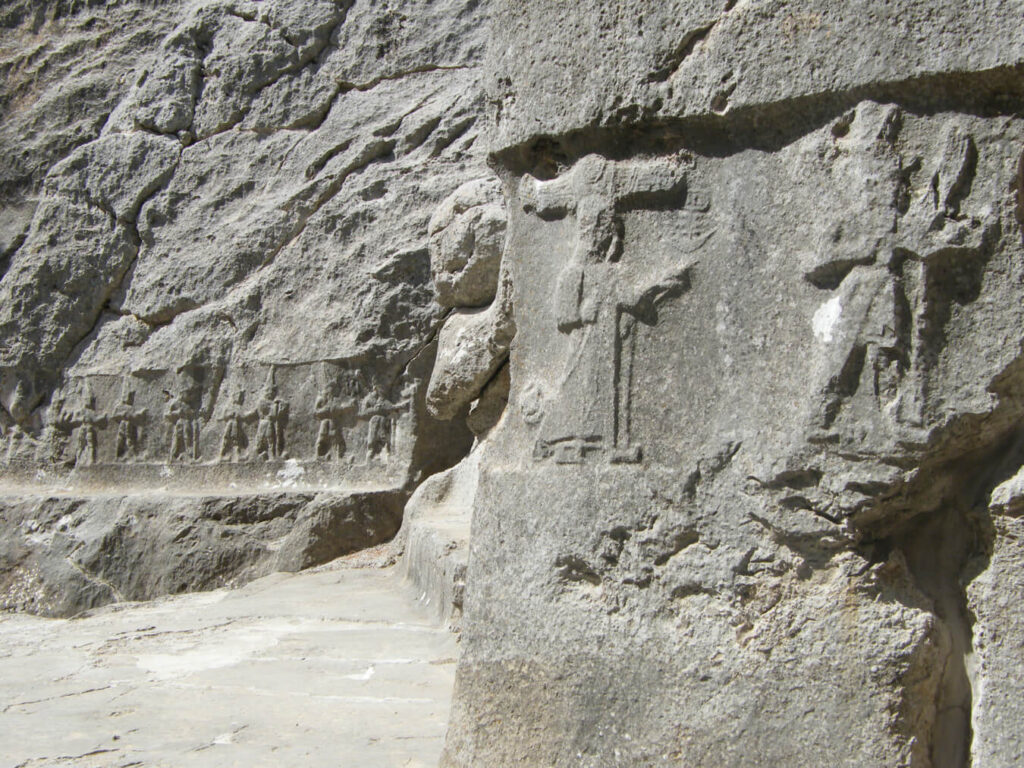
Yazılıkaya can be found just a short distance outside the city walls in a pair of adjoining small rock gullies in a limestone outcrop. It is adorned with figures from the considerable Hittite Pantheon. The problem with the Hittites is that as they expanded and absorbed neighbouring kingdoms and tribes, they took on the Deities of these peoples too. In fact, they proclaimed that they lived in a “Land of a Thousand Gods.” So, what was going on in Yazılıkaya? Who is who and what are they doing. The simple “get out” clause here is that they are representations of Deities and this is a place of worship. Simple. Obviously, that much is true but there is a lot more going on here.
The Hittite reliefs are cut into the inside-facing walls of the two gullies in the rock outcrop accessed from what once would have been a grove. The gullies have been designated as Chamber A and Chamber B. Chamber A, contains reliefs of 6 Deities all facing in a northern direction. With two exceptions, the deities on the left are all male; those on the right are female except for one. They appear to be marching in procession from both sides toward a “platform” at the northern end where the supreme Deities meet: the Hurrian Storm God Teššub on the left standing on the mountain Gods Namni and Hazzi, and his wife, the Hurrian Goddess Hebat on the right, standing on a panther or leopard. Most reliefs contain an inscription in Luwian hieroglyphics in front of each figure’s head.
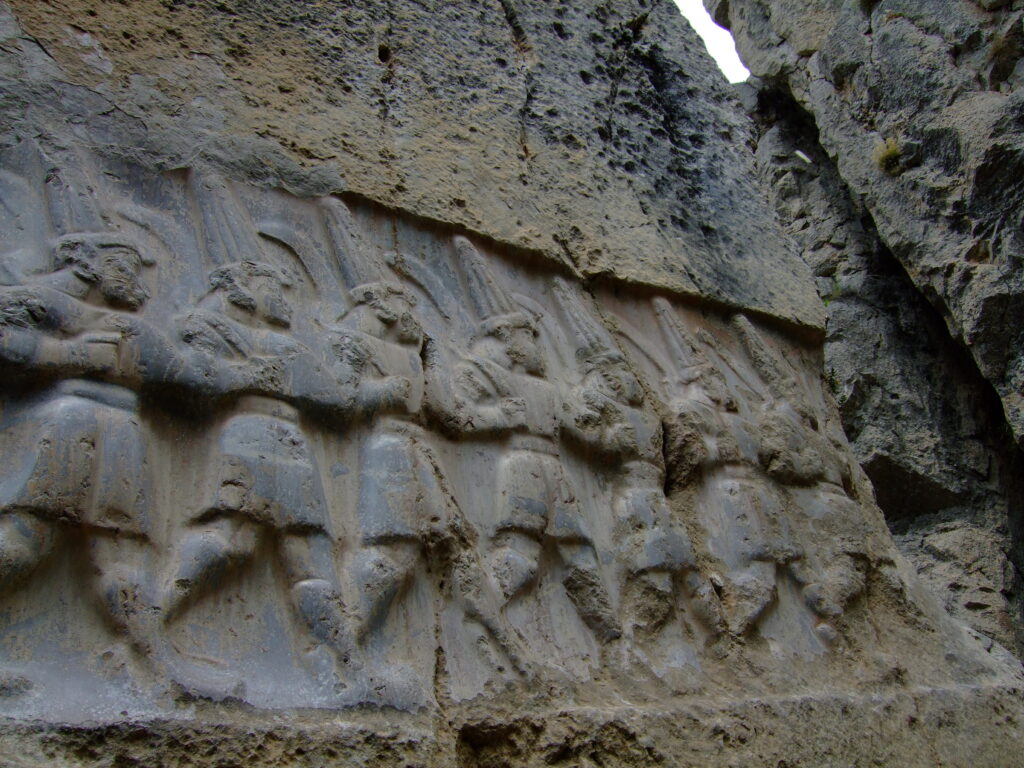
While the branching gullies are natural, a considerable effort was made in modifying the space and the walls to accommodate the reliefs in a clear hierarchy or order that seemed to follow a visual narrative. The reliefs in Chamber B are better preserved since this gully was protected from the prevailing weather and also was buried by natural processes.
The gullies were open to the sky but access to them was walled off and possible only via a gate through a constructed precinct, buildings and an avenue.
As the reliefs were exposed to the sky and the elements it was suggested that the movements of the Sun, shadows, and/or the Moon and Stars were a component of the sanctuary’s function.
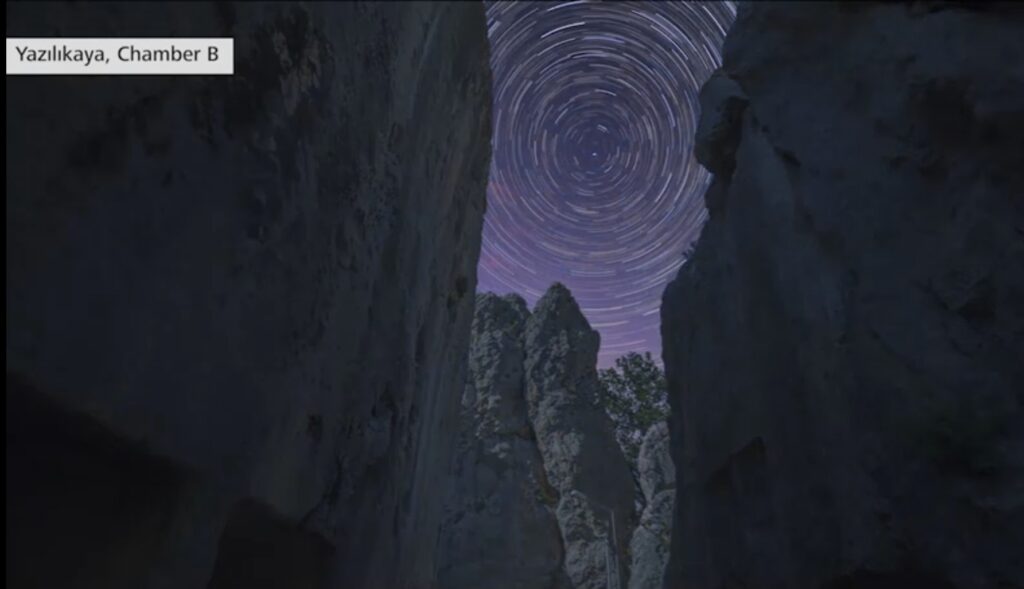
The northern wall of the gatehouse, the first structure erected at the sanctuary, is aligned with the sunset at the summer solstice and the sanctuary was built in a single phase of construction to a unified plan, suggesting a particular purpose. Later it was renovated and renewed in two distinct phases but what is interesting here, in what is a natural occurrence of serendipity, is that day time shadows and alignments in the night sky are picked up by the natural architecture and disposition of the two gullies.
Article continued below…
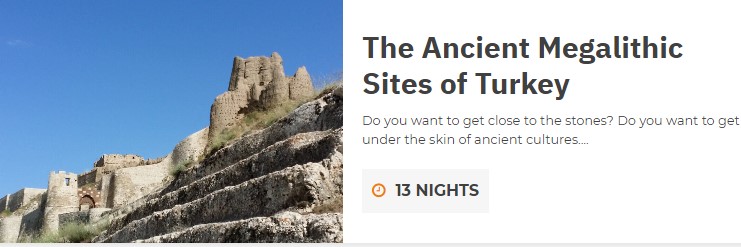
For example, the prominent western wall in Chamber B runs almost exactly north-south. Its flat bedrock face was even extended using ashlar building stones, indicating that the wall itself may have had a function that required a large surface that, for example, could have been used for catching shadows or reflections at significant times. An important point here is that absolute precision wasn’t strictly necessary to attract the attention of intelligent, observant people who had great familiarity with the night sky and the seasonal transit of the sun. Nobody was setting a watch. “Close” still works and this is very close. It is an example of man being led by nature; an example of the Gods communicating with men. The Hittites saw the signs and built on what they were shown.

To take it further, sunlight falls on the relief of Great King Tudhaliya IV in Chamber A in the afternoon for a few days around the summer solstice in mid-June, which may imply that the most distinctive spot was reserved for the Storm God’s highest mortal representative…. more of this later. Chambers A and B exhibit reliefs with 12 uniform male Gods, possibly indicating the 12 Gods of the lunar year – and thus the months?
The temples in front of the sanctuary may have been used for seasonal celebrations, including the New Year’s festival. A connection to celestial bodies is indicated by the presence of the Sun God, the Moon God and the Goddess Šauška, or Ištar, who is represented and named both in the male row of Gods (as morning star and God of war) and in the female row (as evening star and Goddess of fertility). This is a gender duality also found in other Deities of the ancient Middle East.

For reasons not fully explained the Hittite stone masons left, in Chamber A, a column of shaped natural rock protruding from the wall between Reliefs 54 and 55; this modified protrusion could imply a specific function and it is this set of observations that prompted the hypothesis that the entire sanctuary may have been used to record astronomical observations and to keep track of time in one way or another. The main point here is that the Hittite builders have been taking what nature gave them and fine tuning it to produce something of great sophistication.
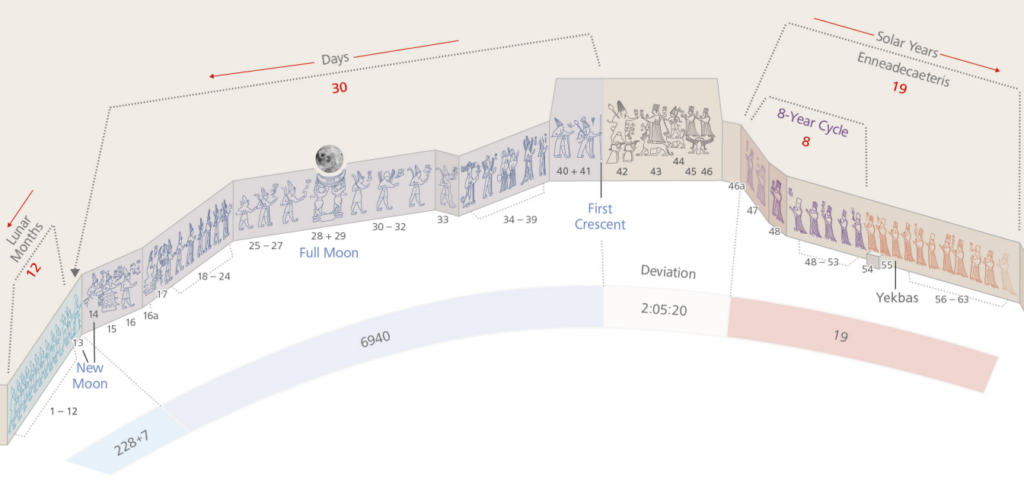
The reliefs of Deities in Chamber A can be arranged in groups in a accordance with astronomic principles marking out the solar and lunar calendars: 12 months; 30 days; “climactic group”; as well as a 19-year cycle (Enneadecaeteris), including an 8-year cycle (Octaeteris).
However, there is always a risk that one can impose an assumption on what ancient peoples have left behind and there are no records referencing Yazılıkaya in the archives discovered so far in Hattuşa, but the arrangement of Deities in Chamber A would appear to record and track definite and identifiable cycles observable in the heavens. If, for example, the number of 19 female Deities on the east wall is correct, this group may have been a means of indicating solar years and synchronizing lunar and solar years in an advanced manner.
In an intricate ballet the figures carved along the walls of the gully measure out what is known as the Metonic Cycle, a cycle of 19 solar years first written up in Western scientific literature by the Greek astronomer, Meton in the 5th century BC. However, the Babylonians knew about it and we see it here in Yazilikaya from the mid second millennium BC, a thousand years before Meton. More than that, it could well have been incorporated into the design of Stonehenge and it was certainly the principal dynamic of the Recumbent Stone Circles found in Northern Scotland dating from the 4th millennium BC. It is also believed that a number of tall cylindrical gold “hats” dating from the late Bronze Age and found only in Germany also use an intricate design to measure the Lunar Cycle we now identify as the Metonic Cycle. Clearly this is an ancient knowledge dating back well before recorded history, but what is it?
The so-called Metonic Cycle is roughly a 19-year Lunar Cycle. The problem is that it does not synchronise with the Solar Calendar, the Lunar year is 11 days short of the Solar year meaning that if one is going to base a religious calendar using both the daytime and night time sky it is necessary to devise a mechanism to reconcile the two. This precisely what Yazılıkaya does.
The arithmetic certainly aligns with the Hittite Deities as we know them and their placement in Yazılıkaya. In addition, solar and seasonal alignments are an integral part of the positioning of dozens of buildings in the city of Hattuşa itself, including the central section of that massive southern wall that straddles Yerkapı and which is aligned for important solar events. To give this place some context, Yerkapı means, in Turkish, the Gate in the Ground and it is located inside a monumental artificial embankment that forms the southern tip of the city walls. That embankment is 15 metres high, 250 metres long, and 80 metres wide at its base and is flanked by huge pyramid like retaining walls. What an amazing undertaking it would have been to line this section up with the Equinox, but align it does. More than this, the western leading-edge corners of the massive retaining wall align with the sunset on summer and winter solstices.
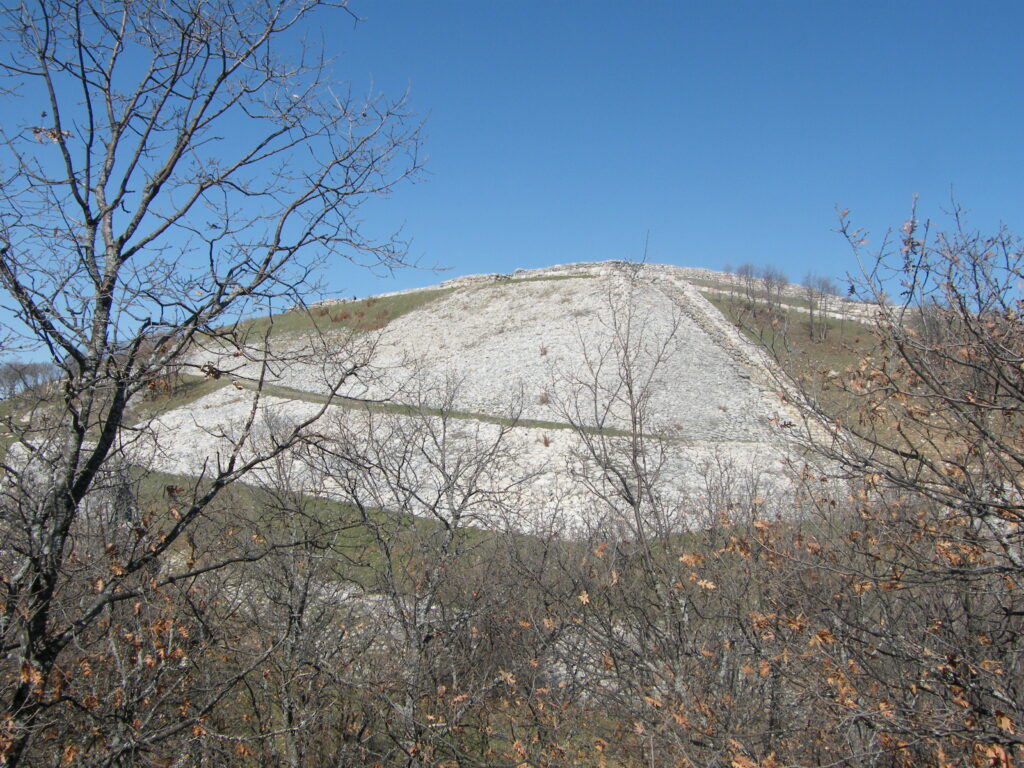
In antiquity the floor of the tunnel was coated with a white colouring that would have, with the limestone of the tunnel’s construction, reflected light all the way down it if the doors at the end were open. Yerkapı bisects the embankment and wall and lines up with North, having an incline of 17 degrees aligning with some point in the night sky. It was originally believed that Yerkapı had a purely defensive or military purpose, although it wasn’t quite clear, but given the astronomical imprint of this entire structure, the purpose, while overtly defensive, almost certainly had other more symbolic imperatives. This southern wall is one of the great sites and sights of Anatolia and, should you be lucky enough to visit, you have a good chance of being able to see it on your own. This is not a crowded place. It is a unique structure that demands respect.

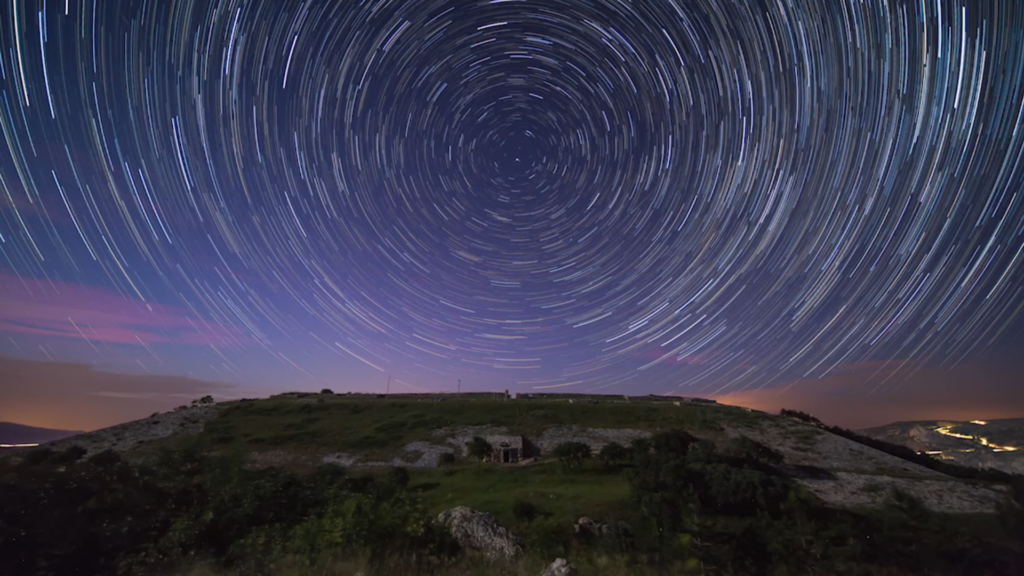
To sum it all up, at Yazılıkaya the relief of the Great King Tudhaliya IV was placed at a spot that receives sunlight only around one of the most important moments of the year, the summer solstice. In a superbly choreographed piece of solar theatre, there is a moment the Great King is bathed in the sunlight and after the sunlight has ceased to illuminate the King’s image, there is a two-minute interval after which his cartouche is illuminated by another ray of sun penetrating a narrow gap in the natural western rock face. By utilizing and optimizing the natural outcrop to their needs, the stone masons created a moment of solar transition that could still be used as a calendar tool today without any need for adjustment! This much is indisputable.
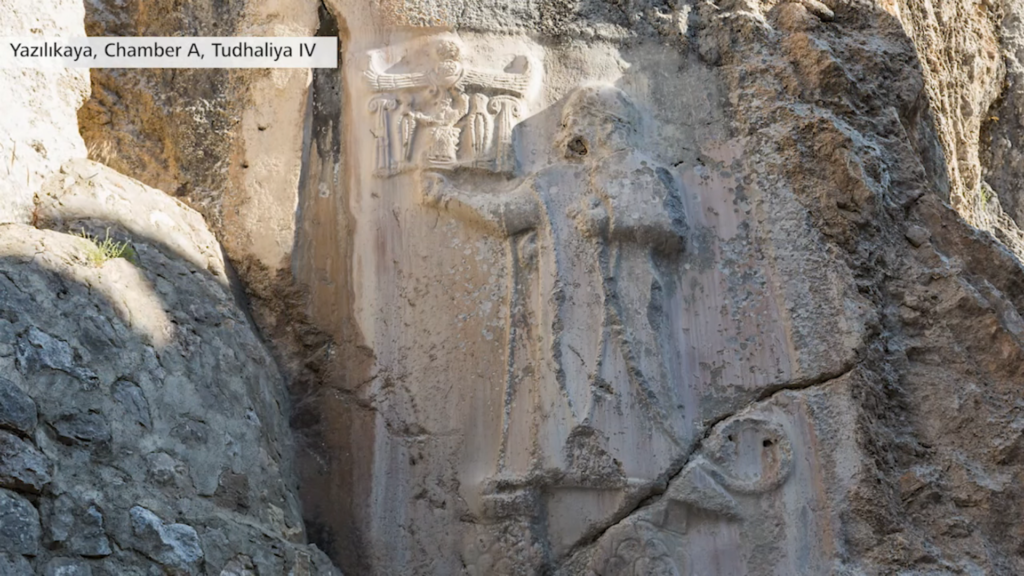
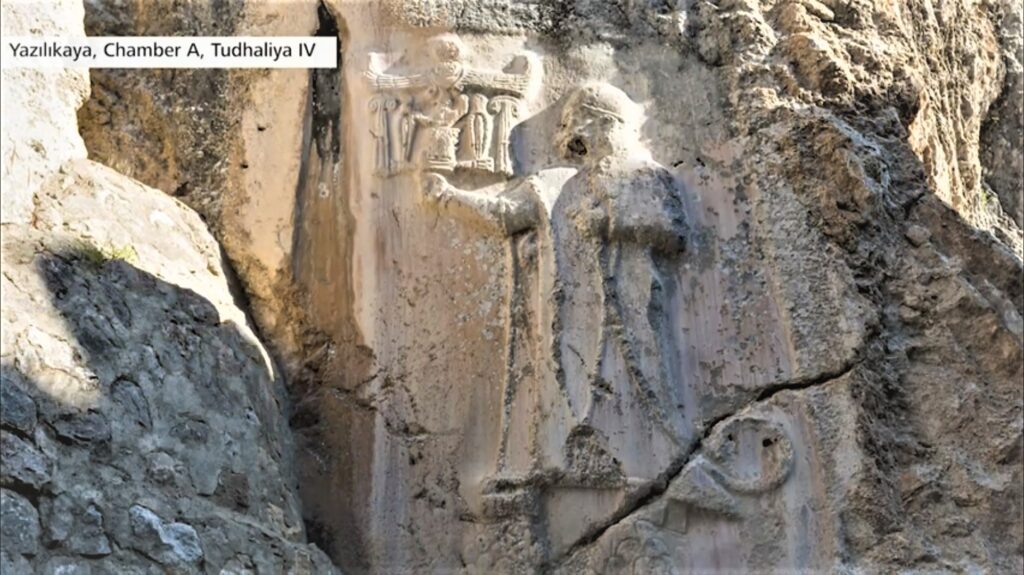
Why did it take so long to recognise this? The problem in identifying these celestial and cardinal alignments has been that the effects are short lived. In most instances the effect is viewable for only 20 minutes in a year. One has to be at the right time at the right place with the right weather conditions to catch the effect.
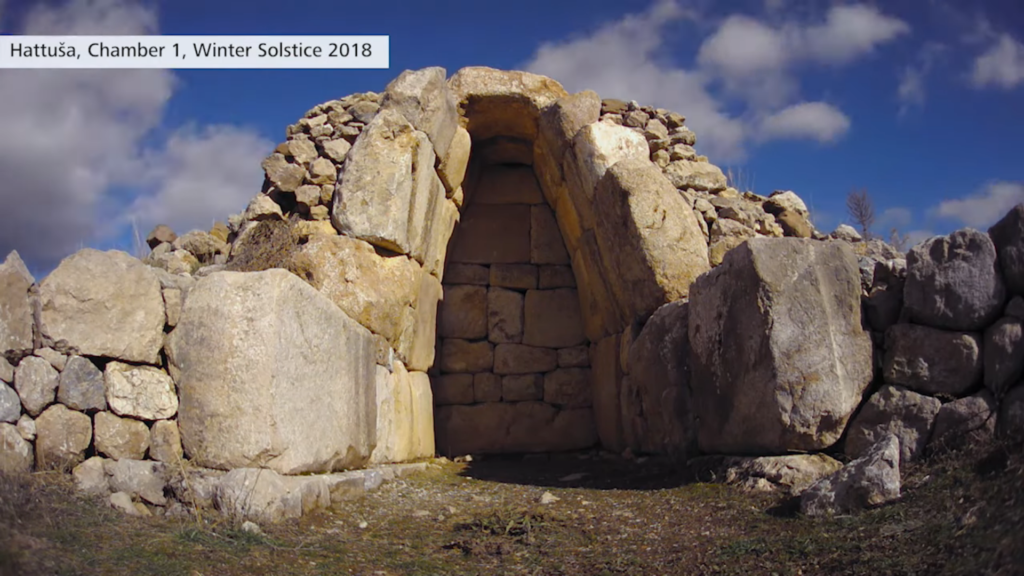
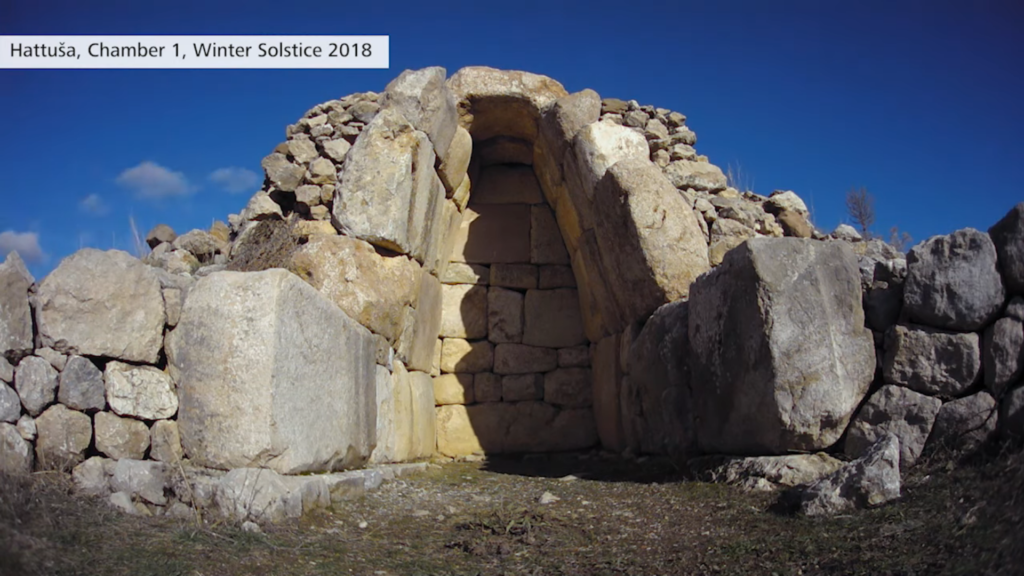
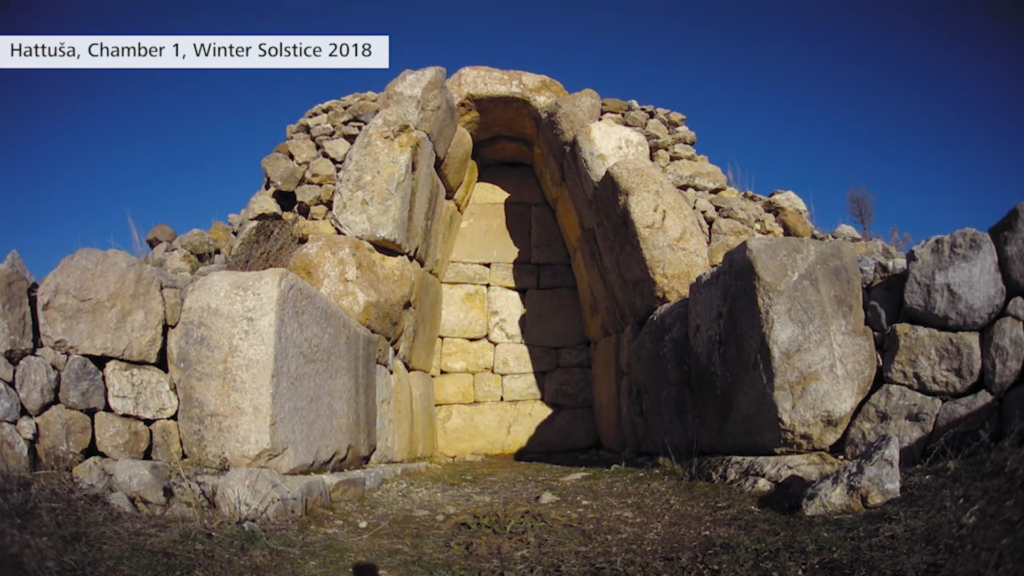
This chamber is filled with Luwian Hieroglyphs. While not completely deciphered, the Great King Shupiluliuma states that with the blessing of the Gods he has conquered several lands and then proceeds to list them. The last sentence mentions “A divine earth-road”. In one interpretation this chamber may have been a symbolic entrance to the Underworld, which makes its recent identification with the Winter Solstice particularly interesting. As with many of the effects noted at Hattuşa they can only be seen for a very short period of time each year.
The other problem is that at Hattuşa all the buildings have been reduced to mid-thigh height where construction was stone. Above this level buildings were mud brick and these are gone. There are a number of buildings, both in Hattuşa and Yazilikaya, the foundations of which have definite alignments but which could only have been observed from a higher level, or an upper floor.
However, in Hattuşa and Yazılıkaya, the Hittite obsession with the Heavens is hard not to see once it has been noted. It simply dominates the layout of the city with numerous temples, shrines and even palaces set up to align with the first or last rays of the sun at important times of the year. In some instances, pools or water bowls were strategically located to enhance the light of the sun or to add to the effect of moon and stars with their reflected light; this is pure mystical theatre. The Hittite obsession with sky is even more pronounced than with other Middle Eastern civilisations in antiquity. This includes that of ancient Egypt and in fact it has been noted that in a high proportion of astrological omens found at Hattuşa, “the number of astrological texts almost equals the total number of texts from other divinatory genres combined.” Ulla Koch- Westerholz “Mesopotamian Astrology” 1995
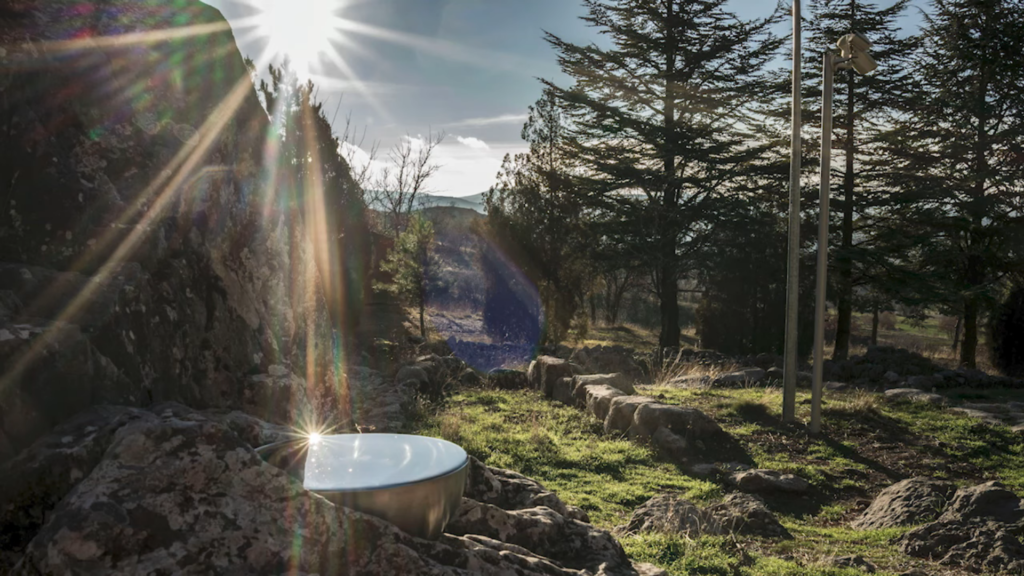
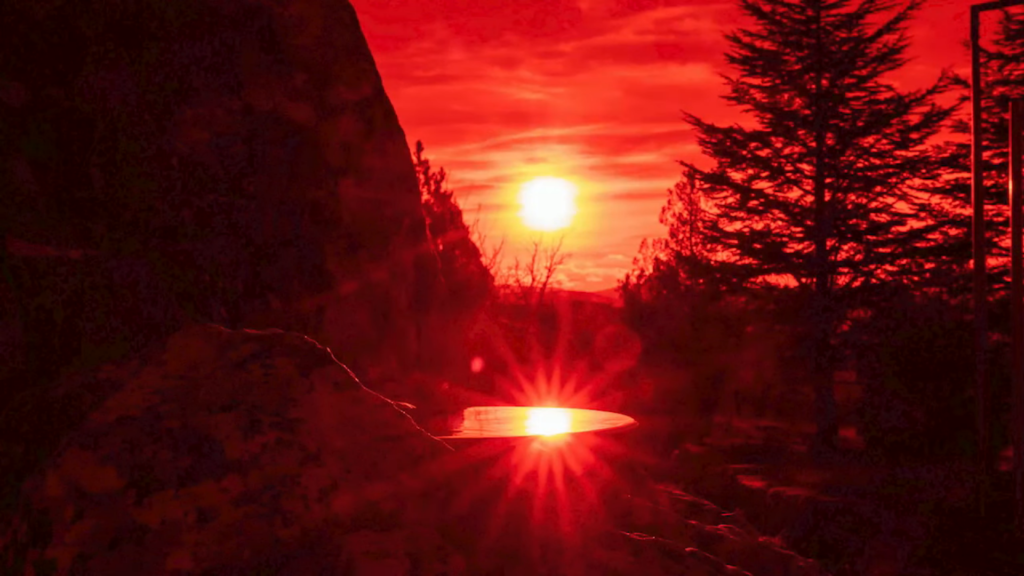
What is clear is that our culture today, including our religious culture with its festivals and anniversaries, draw on the well-established Anatolian and Mesopotamian culture of religious cycles that are firmly embedded in the sky. From where that comes and how, we cannot say, but its roots lie in the distant past and the continuity is hard to miss. We are creatures of the world we inhabit, that much has not changed.
Visiting today, we are presented with the final phase of Yazılıkaya’s use and development representing an astronomical and religious syntheses that evolved over a period of at least 600 years in the 2nd Millennium BC and Hattuşa imprinted onto the ground, at its point of collapse, the fact that it was laid out to serve celestial bodies and Deities represented in the sky.
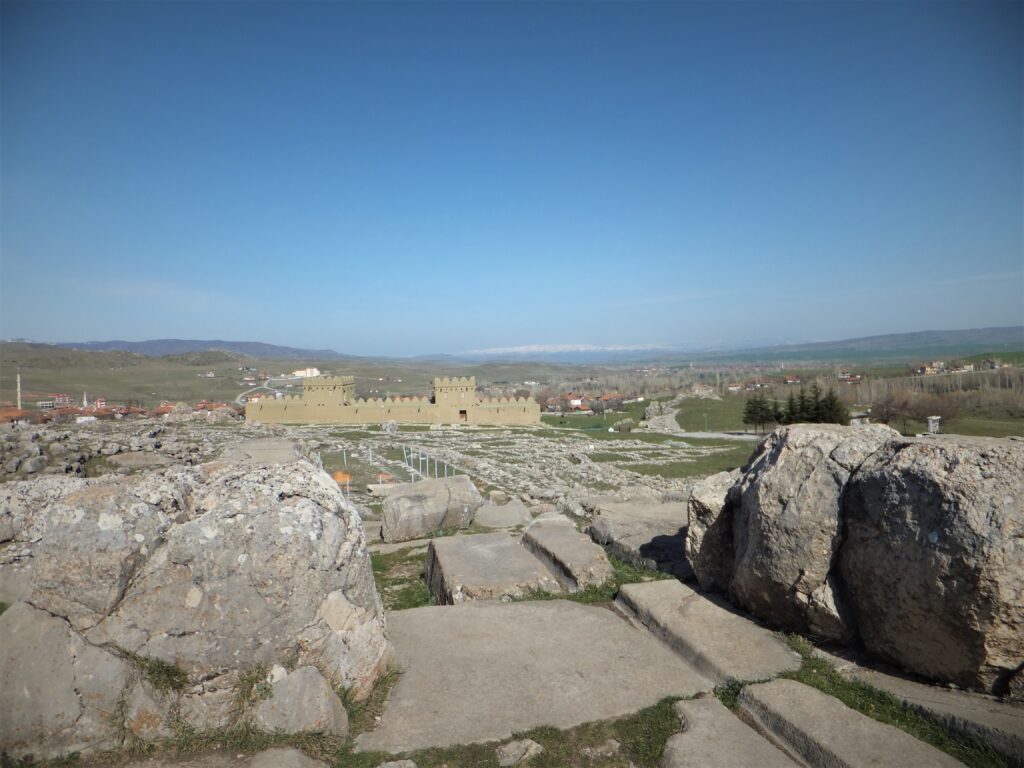
An idea put forward by Hugo Winkler, who excavated Hattuşa in the first decade of the 20th Century, fitted nicely into a concept referred to as “Panbabylonism”; a set of beliefs that views the ancient civilisation of Babylon as the ultimate source of most cultures in the world. One particular aspect espouses the controversial perspective that Judaism was ultimately derived from a form of ancient Babylonian cosmology that spread across the Fertile Crescent region in antiquity. While this is an exaggeration in global terms prompted by broader concepts prevalent during the peak period of Western hegemony, it is certainly true of Western Culture. Winkler did say that “in principle, calculating the year means equalising the circulation of moon and sun…. The whole mechanism goes back to much earlier times than our knowledge of history (i.e., Beyond 3000 BC).”
The connection the ancient traditions of Mesopotamia was broken by the loss of Cuneiform as a medium of recording information in the early part of the modern era. Most of the knowledge was subsumed into the Hellenistic, then later Roman world with little or no acknowledgement of source origins. What could not be read, was forgotten, and Greek and Roman alphabets simply defined and decided upon the origins and scope of our knowledge.
This idea was originally and unsurprisingly vigorously rejected by the establishment of the day, particularly by the Church, but the evidence has demonstrated that the continuity is true and certainly, anyone familiar with the intricate calendar of festivities, Saints and the use of icons, statues and religious images in the Catholic and Eastern Orthodox Churches can hardly miss the point. This is especially true of the most important Christian Festival of the year the timing of which is calculated by a Lunar Calendar. Easter was, and continues to be, an ancient Lunar and Fertility festival dressed in Christian clothes.
Would it be too much of a leap to consider the possibility that it was the natural seasonal and stellar alignments in the secluded and hidden gullies of Yazilikaya that brought the Hittites’ predecessors, the Hurrians, to this place that was clearly the work of the Gods? Is this then what caused the Hittites, a deeply religious people attuned to the heavens, to choose this unlikely place as their Capital City? It certainly wasn’t down to the economic advantages of this location! I’ll leave it to you to ponder.
The Astronomical data and astronomical photos artist’s impressions for this Journal comes from:
The Hittite Rock Sanctuary of Yazılıkaya: A Time-Keeping Device from ca. 1230 B.C. Eberhard Zangger & Rita Gautschy Luwian Studies and Department of Ancient Civilisations, University of Base
A Calendar in Stone: Hittite Yazılıkaya by Eberhard Zangger and Rita Gautschy
Also from a lecture delivered by Geoarchaeologist Eberhard Zangger, available on YouTube: “The Sun, the Moon, and the Stars as seen by Hittites and Luwians”
This landscape and its unique history is really worth a visit, especially if you are into hiking and walking because this city is just huge. We hope you will be able to visit with us and to soak up the energy of Hattusa, the Ancient Capital of the Hittite Empire. Thank you very much for reading our latest travel journal. Feel free to share it with friends and family. Best wishes Sally and Nick.
